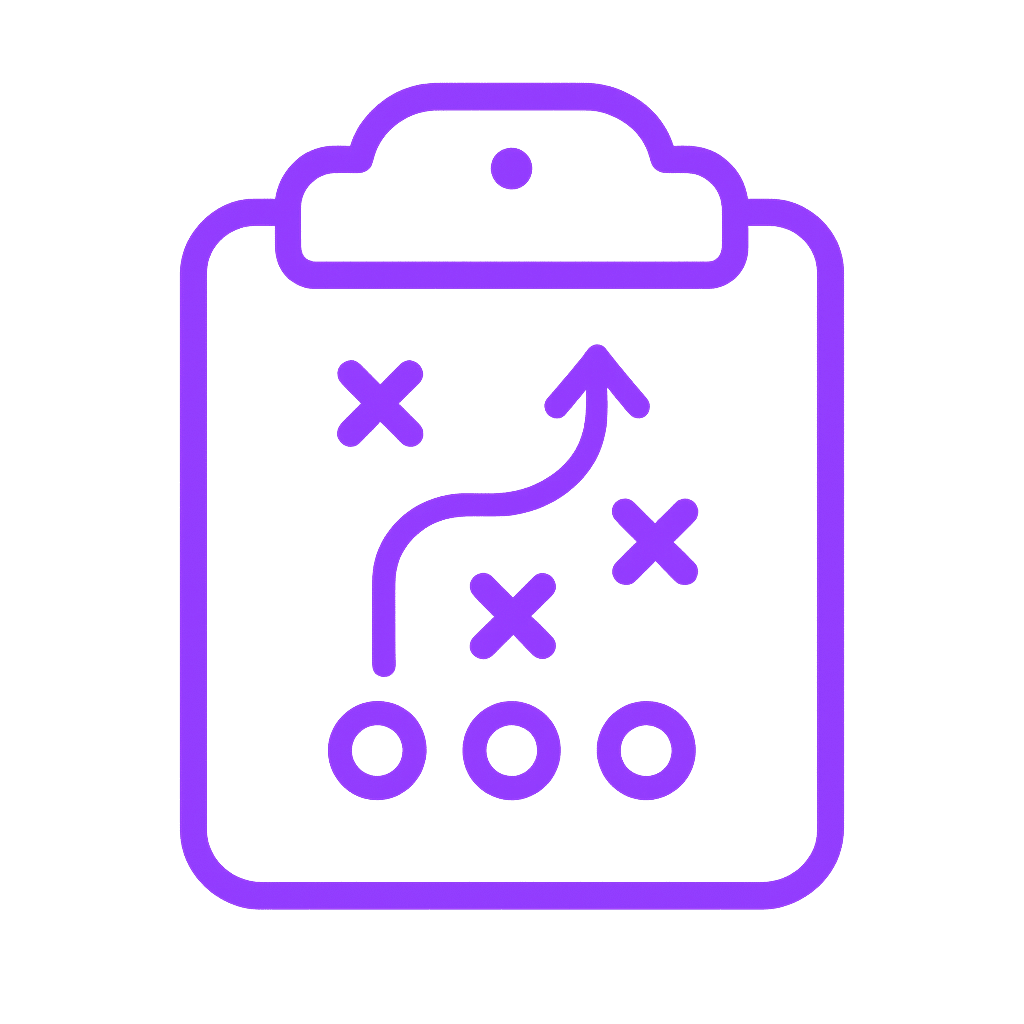
TL;DR
Manufacturers don’t fail because they lack leads — they fail because growth efforts run without a system. A strategic partner installs that system: connecting ERP/MES to CRM/CPQ, enforcing governance cadences, and equipping sales with engineer-grade enablement. Without this alignment, teams chase scattered tactics. With it, quoting speeds up, margins strengthen, and shop-floor strength turns into predictable revenue growth.
Table of Contents
- What Mindset Shift Can Ignite Growth in Manufacturers?
- Why Do Even Operationally Strong Manufacturers Struggle to Grow?
- What’s the Operator’s Manual for Sustainable Manufacturing Growth?
- How Can Manufacturers Build an Engineer-Grade Sales Enablement Strategy?
- How Can Small Manufacturing Businesses Scale Effectively?
- How Can You Turn Shop Floor Data into Actionable Sales Triggers?
- How Can Manufacturers Price, Package, and Position Offers to Win Customers?
- Which Risk Patterns Stall Growth, and How Can You Spot Them Early?
- Which KPIs Really Matter for Driving Sales Growth in Manufacturing?
- Frequently Asked Questions (FAQs)
What Mindset Shift Can Ignite Growth in Manufacturers?
Most manufacturers still think of growth as a marketing or “lead-gen” problem. In reality, leads and websites are outputs, not the system itself. Sustainable growth starts with an operating rhythm that respects capacity, margins, certifications, and the way real buying committees make decisions.

Prioritization
The first step is knowing where you can win. Not every market or customer is worth chasing, and spreading resources too thin clogs operations. Instead, score potential segments on:
- Margin profile
- Delivery reliability
- Compliance fit
- Customer friction
Then commit to three plays, no more. For each play, define proof points like uptime enhancement, reduced scrap, or faster commissioning. Most importantly, define success criteria and exit criteria before spending a single dollar.
Sequencing
Growth unravels when the right things happen in the wrong order. Before launching campaigns, lock quoting rules, standardize options, and publish lead-time promises. Before trade shows or events, make sure reps and distributors already have battle cards, demo scripts, and ROI calculators in hand.
Engineers won’t respond to emails unless CAD libraries and application notes are ready. And territories or deal registration rules must be settled before promotions hit the field. Doing things in the right sequence prevents jams later when demand surges.
Governance
When no one is in charge of the day-to-day rhythm, great plans fail. Keep governance simple but not up for debate:
- Weekly, 30 minutes: Focus on quote speed, first-response time, win rate in target segments, and pipeline stage movement.
- Monthly checkpoint: Scale what’s working, kill what isn’t, and reallocate budget accordingly.
- Clear ownership: Assign SLAs for CPQ, content requests, channel requests, and NPI readiness.
- Visibility: Use a one-page dashboard that ties factory signals (like lead time or scrap rate) to commercial actions.
Outcome
This mindset shift creates clarity. Instead of random activity, you get a repeatable growth engine: quoting times shrink, handoffs improve, and win rates rise along with margins.
But mindset alone isn’t enough. Even manufacturers with strong factories, efficient operations, and great quality often find revenue growth flat. Why? Because the bridge between operational strength and commercial momentum is still missing.
Why Do Even Operationally Strong Manufacturers Struggle to Grow?

It’s a common frustration: the factory is running efficiently, shipments are on schedule, and quality is high, but revenue growth is flat. The problem isn’t execution on the shop floor. The problem is the missing link between operational excellence and commercial discipline. Growth stalls when sales and marketing don’t run with the same rigor as operations.
For a deeper look at why traditional manufacturing marketing falls short and how to fix it, see the guide on Why Most Manufacturing Marketing Fails—and How to Fix It.
The Hidden Gaps
Sales Process Gaps
- Scattered tactics: Without a unifying plan, teams chase disconnected plays. A campaign here, a trade show there, effort without traction. Fix it with a one-page view: three priorities, named owners, and weekly checkpoints.
- Quote latency: Even the best pricing won’t win deals if quotes arrive late. Treat quoting as an SLA: 24–48 hours with standardized CPQ. Responsiveness builds credibility.
- Channel conflict: Fuzzy territory lines pit direct reps against distributors. Publish deal registration rules, price bands, and service responsibilities. Align everyone to the same pipeline facts.
Market Handoff Gaps
- Spec-in inertia: Getting on the bill of materials (BOM) is a milestone, but it’s not the finish line. Expand with retrofit kits, bundles, and clear success criteria to grow account share.
- New Product Introduction (NPI) handoff gaps: Products often launch before sales are ready. Before release, demo scripts, pilots, and objection handling must be required. A readiness score backed by pilot data avoids sputtering launches.
Feedback Gaps
- Untranslated value: Technical claims like “IP rating” or “MTBF” rarely resonate with buying committees. Convert them into business outcomes, uptime, scrap reduction, and lower service costs, supported by ROI/TCO sheets.
- No feedback loop: Shop floor signals like lead-time shifts or warranty tickets often stay siloed. Push ERP/MES events into CRM so sales act with real-time context.
What a Strategic Partner Does
The gaps above don’t exist in isolation; they compound. A quoting delay makes a trade show lead go cold. Channel conflict erodes trust just as new pricing rules roll out. A product launch sputters if demo scripts and partner kits aren’t ready. These problems reinforce each other, which is why patching them one at a time rarely delivers lasting growth.
What manufacturers need is a strategic system that keeps operations and sales in rhythm:
A governance cadence that keeps priorities visible.
- Data hooks that connect the shop floor to CRM.
- Standard enablement assets and CPQ rules that reps actually use.
- A dashboard that ties every factory signal to a sales action.
Some teams can build this discipline internally. Others accelerate by working with a strategic partner who brings the frameworks, sequencing, and accountability already tested in similar environments. Either way, the point is the same: when operational strength meets commercial discipline, growth becomes scalable instead of accidental.
Recognizing the need for a system is only the first step. The harder part is building one that translates shop floor signals into commercial outcomes day after day. That’s where an operator’s manual comes in, a structured way to align operational metrics with sales actions so the entire company moves in rhythm.
What’s the Operator’s Manual for Sustainable Manufacturing Growth?
Growth in manufacturing rarely comes from grand visions. It comes from disciplined alignment between what happens on the shop floor and how revenue is generated. The challenge for many operators is translating operational excellence into commercial impact. Here’s how to make that bridge in a structured way.
Align Factory Metrics to Revenue Metrics
Data from operations shouldn’t exist in a vacuum; it should inform how you sell, commit, and deliver. When revenue and operations teams work from the same playbook, you can remove friction and gain a competitive edge.
- Overall Equipment Effectiveness (OEE)- pipeline velocity. Higher availability and performance should trigger shorter lead times, updated quotes, refreshed offers, and synced calendars. Better OEE only matters when it accelerates deals.
- Scrap and rework – objection handling. Quality gains aren’t just cost savings — they’re proof points. Show how defect reduction lowers downtime and service costs to shift buying conversations.
- Lead time – deal acceleration. Delivery speed is decisive. If you can ship in three weeks vs. competitors’ eight, make it central to your pitch. Use a simple capacity “traffic light” system to avoid overpromising.
Build ICPs That Reflect Real Use Conditions
Not all customers value the same attributes. Your ideal customer profiles should reflect application-specific realities such as compliance, environment, or integration complexity.
For instance, elevator safety buyers will focus on certifications and failure modes, while packaging OEMs care about throughput and sanitation. Score ICPs not just on fit but also on margin potential and cycle length. Select your top three, create a concise one-pager for each, and pull messaging, demo priorities, and content assets directly from those documents. This keeps ICPs from being abstract marketing personas rooted in shop floor realities that translate directly into credible sales plays.
Translate Specs into Outcomes
Specifications only matter when they connect to customer outcomes. A tolerance claim is far more persuasive when linked to reduced rework or higher uptime.
Rewrite your most important specs into single-sentence outcomes and support them with clear test methods. Pair these with application notes, drawing sets, and a guarantee statement that quantifies risk reduction. A simple calculator that translates metrics like accuracy, MTBF, or IP rating into cost impact helps buyers see the value in their own terms.
ABM Lite for Small Teams
Account-based marketing (ABM) doesn’t have to be complex or resource-heavy. A streamlined “ABM lite” approach can be effective for smaller manufacturing sales teams.
Start by tiering accounts based on fit and proximity to your installed base. Name the top 50, assign clear ownership, and plan weekly touches that combine sales, partners, and a relevant content asset. Keep reviews short. 30 minutes to check meetings booked, quotes issued, and pilots initiated. Retire any tactic that isn’t improving stage conversion within two weeks. ABM-lite ensures sales effort scales with the same efficiency discipline as the shop floor, keeping commercial growth in rhythm with operations.
Even with alignment in place, manufacturers stall if sales teams lack engineer-grade enablement. Winning complex, technical deals depends on equipping reps, distributors, and partners with tools that match the rigor engineers expect.
How Can Manufacturers Build an Engineer-Grade Sales Enablement Strategy?
In technical sales, enablement isn’t optional. It’s decisive. Deals are won or lost based on how well you reduce friction, prove value, and keep promises. An engineer-grade sales enablement strategy ensures that everyone from design engineers to buyers to partner reps has the right information at the right time, in a format they can trust and act on.
Application Notes and Selector Tools
Engineers base their decisions on data. Your content should reflect real-world scenarios on the shop floor. Map critical parameters such as loads, duty cycles, temperatures, ingress protection, vibration, and compliance requirements. Use simple decision trees to guide engineers toward recommended configurations, alternative options, and potential limits. Include test methods and failure modes to make selections defensible and credible.
CAD and Drawing Packs
Technical teams rely on precision. Provide STEP, IGES, and native files with clear version histories. Each model should include dimensioned drawings, mounting patterns, connector pinouts, and tolerance callouts. Add concise integration notes highlighting clearances, fasteners, and common mistakes. Hosting change logs allows designers to quickly track updates, avoiding confusion and errors.
ROI and TCO Calculators
Every engineering choice has financial consequences. Connect reliability and maintenance intervals to cost and productivity:
- Inputs: hourly downtime cost, expected equipment life, energy consumption, service intervals, scrap rate, and warranty terms.
- Outputs: payback period, quarterly net savings, and sensitivity across low, medium, and high utilization conditions.
- Proof: provide anonymized examples with real numbers and formula sheets to demonstrate credibility.
Rep and Distributor Kits
Consistency is key when stories are delivered by multiple reps or partners. Kits should be easy to use and quick to onboard:
- Core materials: positioning map, three proof points, two case snapshots, objection handling guides, and demo scripts.
- Field assets: co-brandable one-pagers, pricing guardrails, territory contacts, and lead routing rules.
- Usage: a 10-minute briefing video and a one-page checklist that reps must complete before their first demos.
CPQ Governance
Quoting should be fast, accurate, and aligned with production capacity:
- SLA: median quote time of 24–48 hours with alerts at 18 hours.
- Guardrails: standard options, preapproved bundles, and discount bands by role.
- Approvals: clear thresholds for engineering and finance signoff.
- Capacity: a simple red/green indicator tied to production ensures lead times stay credible.
Win–Loss Loops
Every quote, win or lose, generates actionable data:
- Capture reasons for pricing, lead time, spec fit, certification, or service outcomes.
- Feed patterns into pricing strategy, product roadmaps, and training plans.
- Conduct a 15-minute debrief within 48 hours using a fixed set of questions to continuously improve.
Proof and Certifications Bank
Centralize all certificates, test reports, audit summaries, warranty terms, and safety statements. Tag assets by industry, application, and standard, linking them to CPQ and selector tools so the right proof appears with every configuration.
Findability and Delivery
If reps can’t find an asset, it might as well not exist. Use a single, searchable repository (by part number, application, or keyword) with offline access for plant floors and events. Track asset views and attachment rates in CRM to correlate usage with win rate.
Readiness and Training
Short, focused modules ensure partners and new hires are ready to act:
- Levels: fundamentals, configuration, and advanced troubleshooting.
- Checks: a five-question quiz per module, with quarterly refreshes.
- Incentives: MDF access or special programs require current certification.
Outcome
When enablement is engineered to this standard, sales teams don’t just move faster; they move with credibility. Engineers trust the data, buyers see the financial impact, and partners deliver a consistent story. That foundation allows smaller teams to scale effectively. The next challenge is moving from individual wins to an organization-wide system of growth.
How Can Small Manufacturing Businesses Scale Effectively?
Growth in manufacturing doesn’t happen by chance. It’s the outcome of structure, focus, and repeatable execution. The transition from a founder-led shop to a function-led organization is usually the make-or-break point. Below are pragmatic playbooks that enable small manufacturers to grow without drowning in complexity.
From Founder-Led to Function-Led
One of the first hurdles is moving critical decisions off the founder’s desk. A simple operating system beats ad hoc problem-solving every time. The starting point is a one-page RACI with three columns: decision, owner, and backup. This avoids the common trap of “everything flows back to the founder.”
Pair that with a short, disciplined weekly cadence: 30 minutes, same agenda, no drift. Review the pipeline by stage, quote turnaround speed, enablement gaps, and capacity signals. Layer in two clear escalation rules, like discount requests beyond a band or lead-time changes outside tolerance. This structure creates accountability without bureaucracy.
Lighthouse Accounts: Small Wins, Big Leverage
Scaling doesn’t mean going wide too soon. Pick a narrow vertical and land three right-fit customers that align with your margin profile and compliance strengths. These aren’t just wins. They’re proof points. Document the entire path to value: the problem, your configuration, commissioning steps, and the first measurable result.
Turn these into assets. Capture application notes, “before and after” snapshots, and secure reference rights early. These lighthouse accounts become your story fuel for ABM campaigns, pitch decks, and future bundles. They anchor credibility and signal that you’re more than a small shop taking lucky bets.
Designing the Channel
Channel conflict is one of the fastest ways to stall growth. The cure is clarity. Publish exactly who owns the discovery, quoting, service, and renewals. Define deal registration rules, discount bands, and SLA expectations. Maintain one shared pipeline so direct reps and distributors work from the same facts.
When co-marketing funds (MDF) are in play, tie them to enablement and follow-up, not just glossy brochures. Then, make accountability visible with a quarterly scorecard, such as meetings booked, quotes issued, win rates, and service attach rates. A simple scorecard keeps partners aligned without endless policing.
Expanding Revenue Within the Base
True scale often comes from deepening wallet share, not just chasing new logos. Small manufacturers have four reliable levers:
- Service contracts: Define preventive maintenance, calibration windows, and response times. Tier pricing and tier renewals for uptime metrics.
- Retrofit programs: Audit installed units and publish upgrade paths by model. Package them with ROI snapshots to make “yes” easy.
- Spares and consumables: Set stocking rhythms for customers with automated reminders or portals. Reorders should feel natural, not forced.
- Training: Offer tracks for operators, maintainers, and resellers, with certifications that unlock tangible benefits like extended warranties or MDF access.
Each of these programs builds stickiness while improving margins.
Metrics That Matter
Scaling isn’t about tracking dozens of vanity metrics. It’s about selecting a handful that directly tie to business decisions. Focus on:
- Win rate by target segment
- Median quote turnaround time
- Partner readiness index
- Service attach rate
- Retrofit penetration
- Renewal rate
Review weekly, adjust the budget toward plays that move the numbers, and resist the temptation to spread efforts thin. Scale isn’t about doing more; it’s about doing the right things repeatedly.
Once the scale begins, the next challenge is making sure operational data doesn’t sit idle. The real advantage comes when shop floor signals become triggers for commercial action.
How Can You Turn Shop Floor Data into Actionable Sales Triggers?
Manufacturing teams generate a constant flow of signals from production schedules and quality checks to service requests. Far too many times, those kinds of insights stall on the factory floor. The point of inflection comes when your operational system, like your ERP, MES, QMS, PLM, and your field service, gets integrated with your CRM, CPQ, and your marketing automation systems. Opportunities never fall through the cracks when every trigger results in a sales step.
Event-to-Action Examples
Think of this as translating operations into revenue. A few examples illustrate the principle:
- Lead time improvements: When production speeds up, CPQ defaults update automatically, and stalled opportunities are flagged for outreach within 24 hours.
- Order pattern shifts: Sudden changes in purchase volumes can trigger replenishment quotes or a proactive check-in with the account.
- Warranty or service events: Logged directly in the CRM, prompting a retrofit or service plan review with the account owner.
- Quality alerts: A flagged issue on a shipped SKU can trigger a health check for all accounts using that SKU, preventing downstream problems before they impact satisfaction.
Trigger Design Rules
Every automated action needs a clear framework. On a single page, define:
- Data source – where the signal originates
- Evaluation logic – what qualifies as actionable
- First human step – who responds first
- Target response time – maximum window to act
- Target conversion – desired outcome of the action
This simple rulebook prevents noise and ensures that every alert drives meaningful action.
New Product Introduction (NPI) Stage Gate with Marketing
New product launches should never rely on guesswork. Implement a readiness score requiring a value story, application note, CAD files, demo scripts, FAQ, certifications, CPQ rules, service procedure, and a 10-account pilot plan. Passing requires 80/100 points. Review at day 10: demos run, quotes issued, objections logged, and initial wins captured. This ensures your market introduction is measured, not rushed.
Installed Base Programs
Maximize expansion and customer satisfaction by tracking serial number, model, site, environment, install date, last service, and expected life. Schedule calibration windows, present mid-life retrofit kits with ROI calculations, and automate spares reminders based on actual usage. These programs turn operational visibility into recurring revenue opportunities.
Governance and Security
Every trigger needs a named owner and clear deadlines. Track:
- Time from event to outreach
- Task acceptance
- 14-day stage movement
- Expansion revenue generated
Restrict PII access where possible, maintain a read-only log, and keep an audit trail. Simple governance ensures accountability without bogging down teams.
Outcome
When shop floor signals seamlessly feed into sales actions, the benefits are tangible:
- Faster reaction to operational changes
- Sales reps acting with full context
- CPQ commitments remain credible
- Pipeline velocity improves, and expansion revenue grows
Linking operations with sales enables manufacturers to turn their real-time production insights into measurable revenue outcomes. That’s why this step matters for every growth-oriented team.
When shop floor signals seamlessly feed into sales actions, opportunities emerge faster and with more context. Signals create opportunities, but how you package and price those opportunities determines whether they convert. That’s why the next step is shaping offers that buyers trust and value.
How Can Manufacturers Price, Package, and Position Offers to Win Customers?
Shop floor signals may open doors, but those opportunities slip away without disciplined pricing and packaging. The same rigor applied on the factory floor must guide how offers are structured, framed, and delivered.
Pricing is a trust signal. The way you frame your offers tells customers whether you understand their world and the outcomes they care about. Manufacturers that win consistently are the ones who price the result, not just the product.
A smart path starts with proof-of-value pilots. Instead of showing up with an unmoving rate card, you prove the economics in motion: the costs saved, productivity gains, or new revenue streams your solution enables. Once that evidence is clear, standard configurations and minimum order quantities (MOQs) make quoting faster and cleaner, especially in repeatable deal cycles.
Risk reduction also sells. Packaging warranties and service support into your offer doesn’t just protect the buyer. It creates a steady stream of recurring revenue for you. Similarly, bundling products and services the way customers naturally buy makes adoption frictionless, while keeping pricing discipline through guardrails and review checkpoints ensures your margin doesn’t quietly erode.
The winners also measure relentlessly. Not just top-line revenue, but the signals beneath it: price realization, margin by offer, pilot-to-rollout conversion, attach and renewal rates, and quote turnaround time. These metrics reveal whether your pricing strategy is holding or slipping.
Pricing, plain and simple, is a strategy in disguise. Done as part of customer value rather than as an end-of-spreadsheet, last-minute adjustment, you create offers that seal deals now and stand the test of time.
Even with the right pricing discipline, growth can stall if risks go unchecked. That’s why manufacturers need a system to spot and correct patterns before they spread.
Pricing discipline isn’t just about protecting margins; it’s how you prove that operational gains translate into commercial trust. Faster lead times or lower scrap rates only matter if they show up in your pricing and packaging as real buyer value. This is where shop floor strength becomes revenue strength.
Which Risk Patterns Stall Growth, and How Can You Spot Them Early?
Even when operations run smoothly, commercial cracks can appear. Spotting risks early ensures that the discipline of the shop floor carries through to sales execution and keeps growth from stalling.
Growth rarely collapses overnight. It stalls when small cracks go unnoticed and multiply. The best manufacturers run with a risk radar: spotting anti-patterns early and correcting with clear rules before they snowball.
- Tactic thrash: Teams spread themselves thin, starting many plays but finishing none. The fix: set a work-in-progress cap, freeze new ideas mid-sprint, and demand one completed play before adding another. A visible one-page backlog keeps focus sharp.
- Tool sprawl: When quotes live in inboxes while CRM and CPQ collect dust, accuracy and speed tank. Anchor to a single system of record, standardize quote templates, and enforce SLAs. A quick audit, let’s say five random quotes a week, keeps the process honest.
- Channel conflict: Direct sales and distributors undercut each other when the rules are vague. Solve it with deal registration, price bands, and shared pipeline visibility. Quarterly partner scorecards create accountability across meetings, quotes, wins, and renewals.
- Demo-only selling: A flashy demo without economics is a wasted motion. Require at least one ROI/TCO snapshot and a reliability proof before demos go live. Capture success criteria upfront, then log results within 48 hours.
- Unowned relationships: If distributors control the customer relationship, your brand risks being commoditized. Keep your seat at the table with co-selling plans, co-branded assets (with your logo primary), and direct service contracts. Make data sharing nonnegotiable so usage and support history flow back into your systems.
- Kill-switch rules: Growth plays aren’t immortal. Set rules that pause or pull support automatically:
- Freeze any play missing two weekly SLA targets in a row.
- Stop discounts if the realized margin falls below the floor for two weeks.
- Suspend campaigns in segments where capacity goes red or lead times break promises
- Pull MDF if partners ignore registration or follow-up rules.
- Weekly risk review: Keep it short: a 20-minute review on metric drift, blocked decisions, and exceptions. Owners leave with clear corrective actions and due dates. Close with a simple yes/no on whether each active play continues.
Issues surface while they’re still manageable. Plays that deliver get more fuel. Plays that don’t get shut down before they drain time and money. Risk rules keep growth from unraveling when signals are missed or misused.
By spotting cracks early, whether in quoting, channels, or demos, manufacturers ensure that the factory’s operational discipline is matched by the field’s commercial discipline. That alignment keeps shop floor signals from stalling before they become sales outcomes.
Which KPIs Really Matter for Driving Sales Growth in Manufacturing?

The factory thrives on clear metrics, and sales should be no different. Measuring the right KPIs ensures shop floor discipline translates into predictable revenue growth, not just activity.
Data overload can paralyze. The smartest manufacturers track a short list of KPIs that drive action, and they define both the source and the response for each one.
- Quote speed: Median hours from request to quote. Target 24–48. If it slips, streamline fields, lean on bundles, and reroute approvals.
- First response time: Minutes to the first human reply. Target under 15 during business hours. If it drifts, add an auto-acknowledgement and assign a triage owner.
- Demo-to-pilot conversion: % of demos that convert to pilots within 30 days. If low, tighten the qualification and demand the success criteria before scheduling.
- Pilot success rate: % of pilots that hit uptime, scrap, or throughput thresholds. If weak, refine configuration templates and debrief within 48 hours.
- Win rate by segment/channel: If one route lags, recheck deal registration and run an enablement sprint.
- Rep readiness index: Completion of required enablement. Block MDF and major discounts until reps are current.
- Installed base expansion: Retrofit, service, and spares revenue. If flat, trigger mid-life offers and automated reminders.
Dashboard rhythm
- Weekly: quote speed, response time, demo-to-pilot conversion, red accounts, and capacity status.
- Monthly: win rate, pilot success, realized price, and expansion revenue. Adjust the budget based on movement, not inertia.
Decision rules and hygiene
Make the system self-correcting:
- Trigger action on two-week misses for speed or conversion.
- Flag any 10-point gap between direct and distributor win rates.
- Act if expansion revenue falls below plan.
Lock required fields for stage changes, time-stamp every quote from CPQ, reconcile tags monthly, and archive stale opportunities quarterly.
Leaders walk into reviews ready to decide, not debate. Resources shift immediately toward plays that move the needle on win rate, speed, and customer expansion. These KPIs aren’t just numbers on a dashboard. They prove factory signals are captured, converted, and acted on in sales motions. When speed, win rates, and expansion metrics improve, operational excellence has crossed the bridge into predictable, profitable revenue.
Frequently Asked Questions (FAQs)
What is a growth strategy for manufacturing companies?
A growth strategy isn’t just about marketing campaigns. It connects shop floor realities, lead times, scrap rates, and certifications with sales and marketing motions like enablement, pricing, and channel rules. That system-level alignment creates a predictable pipeline and profitable revenue.
How can manufacturers grow without adding headcount?
Growth comes from discipline, not more bodies. Manufacturers scale without straining headcount by tightening quote SLAs, focusing only on right-fit segments, and automating triggers between ERP/MES and CRM/CPQ. Expansion revenue from service, retrofits, and spares amplifies growth without new lines or hires.
What is manufacturing sales enablement?
Sales enablement in manufacturing means giving reps and distributors the same rigor engineers expect. CAD files, selector tools, ROI/TCO calculators, and CPQ rules turn shop floor proof into buyer-ready content. It’s how technical strength becomes commercial momentum.
How do small manufacturers scale on a budget?
The key is focus. Land three lighthouse accounts, enforce channel clarity, and build repeatable revenue inside the installed base with service, spares, and training. ABM-lite campaigns and systemized handoffs mean growth compounds without runaway spend.
Which KPIs matter most for manufacturing sales growth?
Track the signals that prove shop floor strength is becoming sales strength: quote speed, demo-to-pilot conversion, pilot success against uptime or scrap criteria, win rate by segment, and installed base expansion. These are the metrics that show alignment is working.
What does “shop floor to sales” mean in manufacturing?
It means operational signals, lead-time gains, quality improvements, or service events that trigger commercial actions like quoting, upselling, or renewals through connected systems. It’s the bridge that turns production excellence into scalable revenue.



